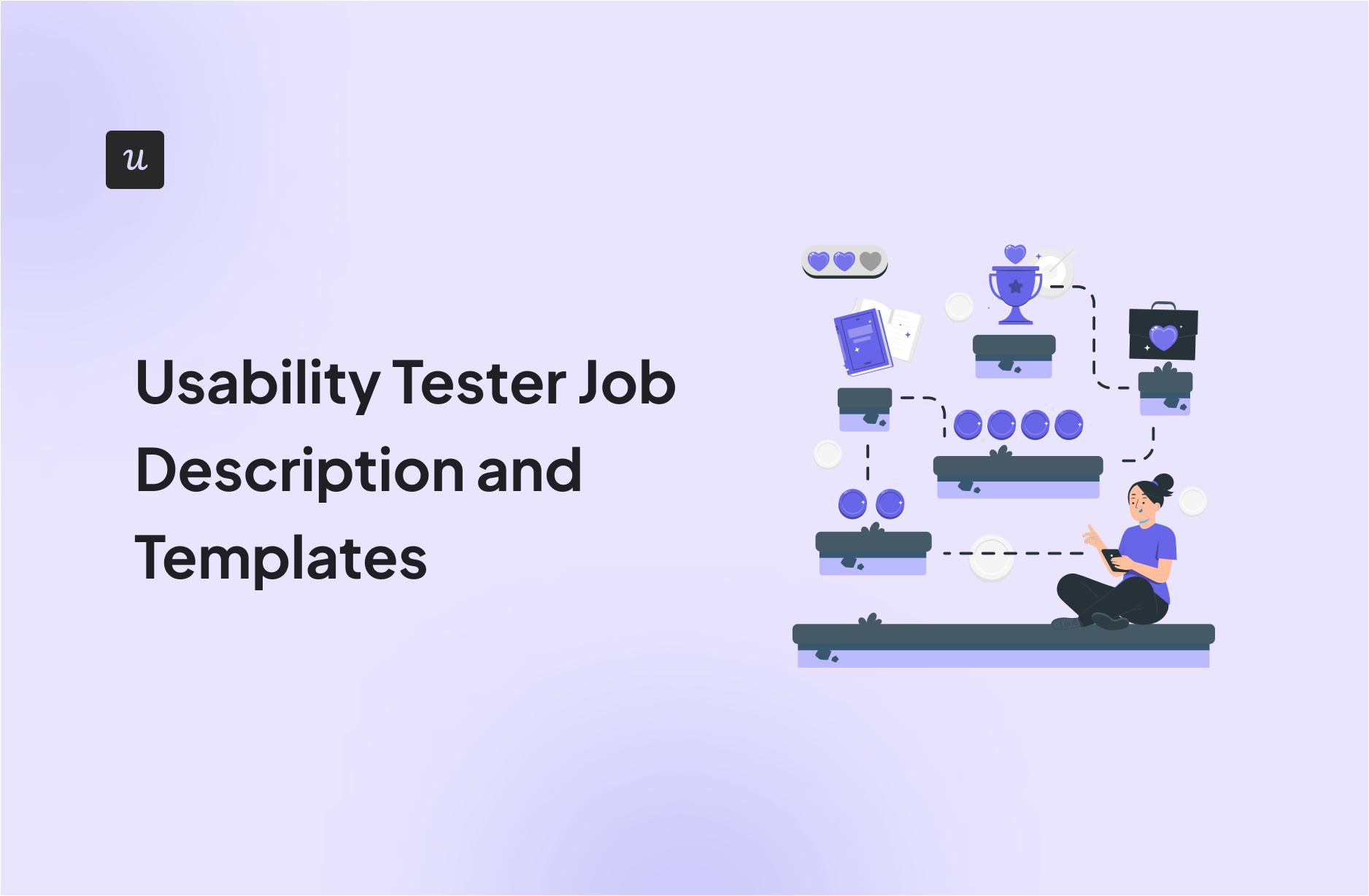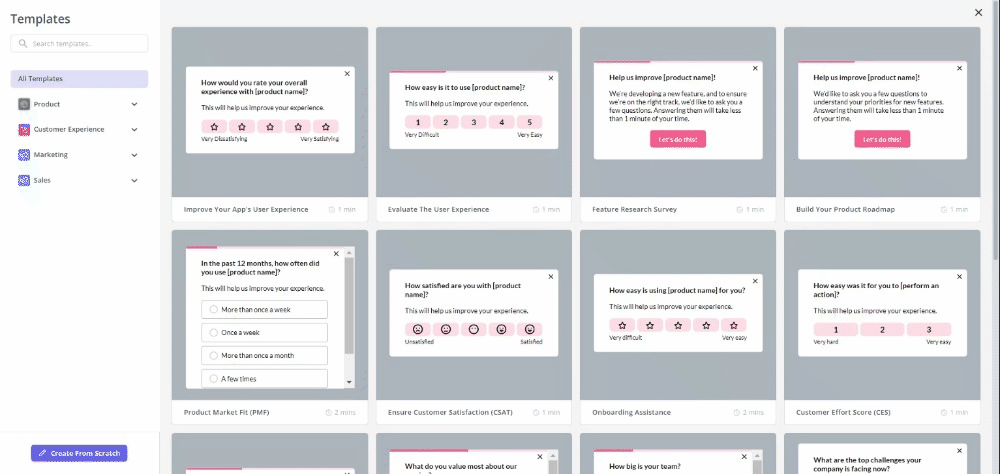
Interested in usability tester roles? You’re in the right place!
In this guide, we’ll explore the ins and outs of usability tester roles through detailed job descriptions and handy templates.
Whether you’re hiring, job hunting, or simply curious, we’ve got you covered with practical insights and ready-to-use resources.
Let’s dive in!
Try Userpilot Now
See Why 1,000+ Teams Choose Userpilot

TL;DR
- A usability tester is a professional who evaluates software applications to ensure they are intuitive, efficient, and user-friendly.
- A usability tester’s job description outlines the essential duties, required skills, and qualifications necessary to evaluate the ease of use and effectiveness of a product or service.
- The specific requirements for this position will vary depending on the company size, industry, and the complexity of the product or service being tested.
- For instance, a usability tester at a data visualization platform might focus on evaluating the clarity and effectiveness of charts and graphs, while one at a task management app might concentrate on assessing the intuitiveness of workflows and task organization features.
- Looking into tools for usability testers? Userpilot is an all-in-one product platform with engagement features and powerful analytics capabilities. Book a demo to see it in action!
What is a usability tester?
A usability tester is a professional who evaluates software applications to ensure they are intuitive, efficient, and user-friendly.
In the SaaS industry, a usability tester conducts user tests, identifies usability issues, and provides feedback to improve the product.
Usability tester’s main responsibilities
The usability tester handles various tasks such as:
- Identify Usability Issues: Detect and document any problems users encounter.
- Develop and Execute Test Plans: Create detailed test plans and scripts tailored to assess specific aspects of the product’s usability.
- Collaborate with Cross-Functional Teams: Work closely with designers, developers, and product managers to discuss findings and suggest improvements.
- Analyze Test Results: Interpret data from user testing sessions to draw insights and create comprehensive reports for stakeholders.
- Recommend Improvements: Based on testing results, propose changes to enhance the user experience.
- Ensure Product Usability: Validate that the final product is intuitive, user-friendly, and meets the needs of the target audience.
- Stay Updated with Trends: Keep abreast of the latest usability best practices, tools, and industry trends to apply them to testing processes.
- Participate in Design and Development: Provide user-centric insights during the design and development phases to ensure a seamless user experience.
- Manage Testing Environments: Maintain and update testing tools and environments to ensure they are ready for use during testing sessions.
Requirements and Skills
- Proven experience as a usability tester, UX researcher, or in a similar role.
- Familiarity with usability testing principles and best practices.
- Experience with usability testing tools and software (e.g., Sketch, Figma, Adobe XD).
- Strong analytical abilities to interpret user data and provide actionable insights.
- Excellent verbal and written communication skills for presenting findings and recommendations.
- A keen eye for identifying usability issues and providing precise feedback.
- Bachelor’s degree in Human-Computer Interaction, Psychology, Computer Science, or a related field.
Usability tester job description and template
At [Company X], we are seeking an enthusiastic usability tester to join our team and enhance our product’s user experience.
You will develop and execute detailed test plans, collaborate with cross-functional teams, and ensure our software is user-friendly and meets user needs.
Here is a more detailed overview of your tasks:
- Create and execute usability test plans and scripts.
- Identify and document usability issues.
- Develop and execute detailed usability test plans and scripts.
- Collaborate with designers, developers, and product managers to improve the user interface and overall user experience.
- Analyze test results and create comprehensive reports for stakeholders.
- Recommend changes and improvements based on user feedback and testing results.
- Stay updated with industry best practices and usability trends.
- Participate in the design and development process to provide user-centric insights.
- Manage and maintain testing environments and tools.
Best practices to be a great usability tester
To succeed in your role, there are a number of proven methods and tips you should follow:
- Be Thorough in Planning: Always develop detailed test plans and scripts. Clearly outline your objectives, tasks, and metrics to ensure your tests are comprehensive and consistent.
- Create Realistic Test Scenarios: Design scenarios that closely mirror real-world usage. This approach will provide more accurate insights into how users interact with the product.
- Pay Close Attention: During testing sessions, carefully observe user interactions and listen to their feedback. This will help you identify subtle usability issues and understand user frustrations.
- Stay Updated: Continuously educate yourself about new usability trends, tools, and best practices. Keeping your skills current ensures you can apply the most effective techniques.
Usability tester FAQs
- What does a usability tester do?
A usability tester evaluates how easy and effective a product is to use by observing real users as they interact with it. They identify issues, collect feedback, and provide recommendations for improvement.
- What are the roles of usability testing?
The roles of usability testing include identifying usability problems, improving user satisfaction, and validating that the product meets user needs and expectations.
- What questions to ask during a usability test?
Ask about task difficulty, encountered issues, confusing elements, overall experience, and suggested improvements.
- What are the limitations of usability testing?
Limitations include small sample sizes, potential resource intensity, not uncovering all issues, needing skilled facilitators, and subjective findings.
Conclusion
We hope this guide has provided you with valuable insights into the roles and responsibilities of usability testers.
By understanding the key responsibilities and skills required, you can make informed decisions and take meaningful steps in your career or recruitment journey.
Looking into tools for usability testers? Userpilot is an all-in-one product platform with engagement features and powerful analytics capabilities. Book a demo to see it in action!








